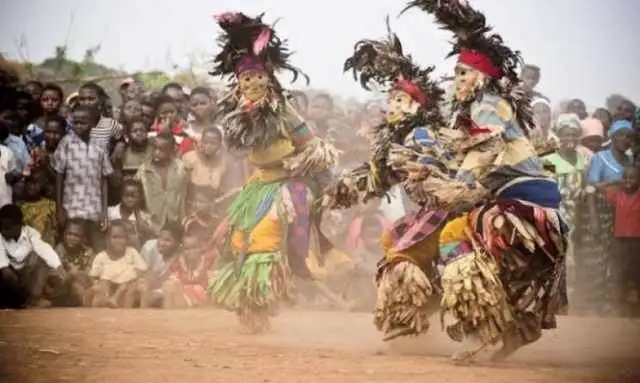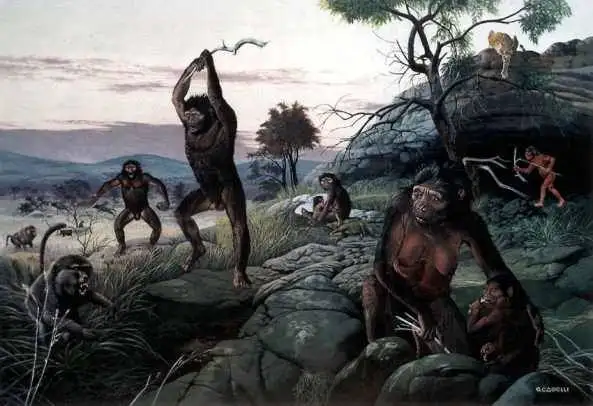Music: A Primal Human Survival Behavior
On our daily commute, during meals, or while working, music is often a constant companion. But have you ever wondered—where did music come from?
Some theories suggest music began as a form of courtship among early humans. In this view, music helped express emotion and attract mates, ultimately aiding the survival of the species. This idea seems plausible, as certain styles of music clearly carry sensual undertones.
Others believe music has roots in rituals and spirituality. Many indigenous tribes still use chants and rhythmic drumming in ceremonies, aiming to connect with deities or enter altered states of consciousness.
However, these ideas don’t fully explain why people sing in groups, hum when content, or why live concerts stir powerful emotions. To understand music’s true origin, we might need to return to the natural world and examine how animals use sound.

In tropical rainforests, birds and monkeys are among the loudest creatures, while animals like buffalo and zebras tend to be much quieter. The reason lies in their survival strategies. Tree-dwelling animals rely on height for safety, and since predators can’t easily climb thin branches, these animals can afford to make noise. This explains why smaller creatures high in the trees can call out without attracting danger.

In contrast, land animals benefit from staying silent. Predators like lions and tigers move quietly while hunting, minimizing noise to avoid alarming their prey. Silence increases survival.

Humans, however, are ground-dwellers and naturally noisy. Could this trait have actually helped early humans survive?
Consider how humans compare to other animals:
In terms of running speed, even an elite athlete like Usain Bolt would fall far behind a cheetah or antelope. Clearly, outrunning threats was never humanity’s strength.

Humans also lack brute strength. Even much smaller animals like chimpanzees possess far greater muscle power. Studies show a male chimpanzee can pull four times the weight a similarly sized human can manage.

When it comes to teeth, most land animals rely on sharp canines for defense and hunting. Yet human canines began shrinking five million years ago, long before the use of fire and cooked food became common. This suggests humans had already abandoned the need for biting as a survival tool.

Our skin, too, offers little protection. Unlike thick animal hides, human skin is fragile and vulnerable to claws, teeth, and environmental hazards.

So how did these seemingly weak creatures manage to endure in such a dangerous world?
One theory proposes that early humans developed music not for mating, but for survival. When night fell and predators roamed, humans may have used group singing and rhythmic movement to create the illusion of a larger, more intimidating presence.

These early defense rituals likely relied on loud, coordinated voices and physical movement—essentially the beginnings of dance. Such displays could scare off predators and reinforce group cohesion.

There are a few reasons this would have been effective. First, group singing amplifies sound. Harmonies, especially dissonant ones, collide and create powerful vibrations that suggest the presence of many individuals. This auditory illusion could have made predators hesitate.

Second, human vocal range plays a key role. Male and female voices differ by an octave, and deep male voices are particularly effective at carrying over long distances. A group of men roaring together might sound like an approaching threat to any nearby animal.
Third, rhythm binds people together. Moving and chanting in unison triggers a sense of group identity. This trance-like state fosters bravery and selflessness, traits essential in facing danger together. It also explains why modern live music performances still evoke such visceral responses.

While speculative, this theory paints a compelling picture: music didn’t just entertain—it protected us. Only once safety was established could humans begin to explore music as art, emotion, and philosophy.
Today, when you learn to interpret expression and structure through classical sheet music, you’re participating in a tradition that reaches deep into human history. Through piano online lessons, modern learners are able to connect with this ancient language in an accessible and structured way. For those just starting, easy sheet music offers a bridge between raw emotion and technique, supported by clearly marked piano notes that make even early attempts musically rewarding.
The roots of music may be buried deep in our evolutionary past, but its resonance lives on—shaping how we connect, express, and even survive.
FAQs
Q1: What does the idea of music as a survival tool mean for modern music learners?
A: It suggests that music isn’t just for entertainment—it's deeply human and instinctive. Studying classical sheet music can feel more meaningful when we understand music’s primal origins and emotional power.
Q2: How can beginners experience this primal connection through piano?
A: Starting with easy sheet music is a great way to build confidence while expressing emotion. Platforms offering piano online lessons often emphasize musical feeling alongside technique, making the experience both intuitive and expressive.
Q3: What role do piano notes play in connecting with music emotionally?
A: Piano notes help bridge instinct and structure. As you practice with clearly notated music, your ability to convey rhythm and intensity—key survival traits in early music—also grows.











